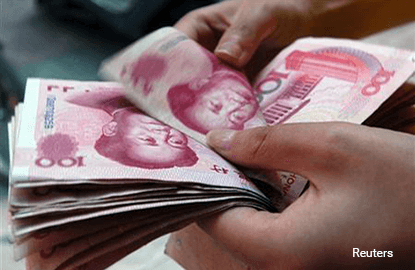
SINGAPORE (Jan 5): In the past two weeks, the People’s Bank of China’s (PBOC) daily USD-RMB midpoint fix has underestimated foreign exchange movements.
The midpoint fix dictates where the RMB can trade with other currencies, within a 2% range.
In fact, Citi Research’s analyst Siddharth Mathur notes that the deviation has been far more significant and has occurred more consistently than in previous episodes of USD strength. “This episode more than offsets the mid-November period, during which the fixings had responded more forcefully than expected to USD strength,” said Mathur.
The consistent undershooting has led to a slight improvement in the nominal effective exchange rate for the Chinese currency, and resulted in the CFETS RMB index increasing to 95 at end-2016, compared with the 94 level in mid-Nov 2016. Even the 2017 change in the basket composition of the index did not impact the index’s performance, added Mathur.
According to Mathur, the strengthening of the USD/RMB currency pair could not have come at a worse time. As it stands, investors are already anticipating an increased demand for the USD, after the US$50,000 per year retail quota for foreign currency purchases gets reset in the new year.
At the same time, there are continued fears of US policies strengthening the dollar further, at the expense of China. Domestically, the erosion of China’s foreign exchange reserves, the lacklustre property market and the effects from the fixed income selloff remain a concern.
So what could the Chinese government do?
Mathur thinks they will emphasise on stabilising the currency at this point, by attempting to mitigate any further depreciation against the USD.
“Policymakers may especially like to parry any currency pressures ahead of Donald Trump’s inauguration and the earlier-than-usual Lunar New Year holidays,” said Mathur. “But to successfully defend RMB amidst a strengthening dollar will require: a more visible departure from the established fixing methodology, a faster pace of reserves depletion, tighter controls on capital outflows, or (most likely) a combination of these.”